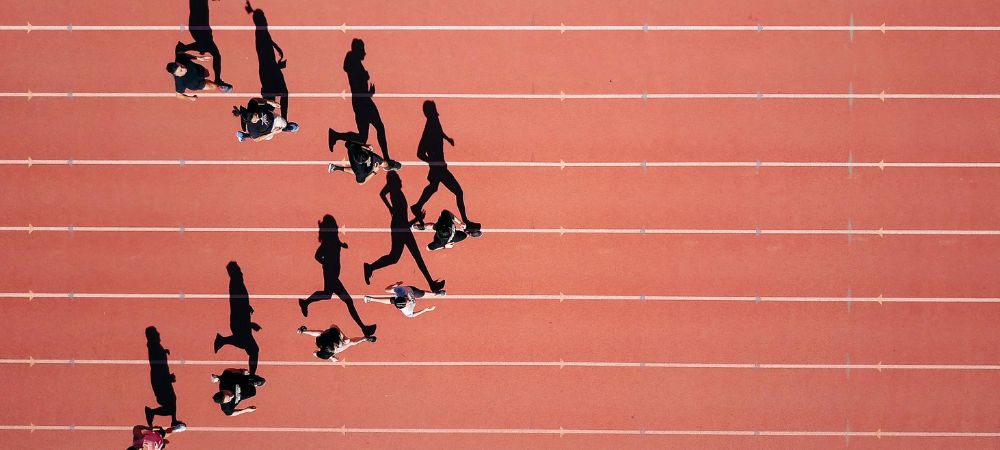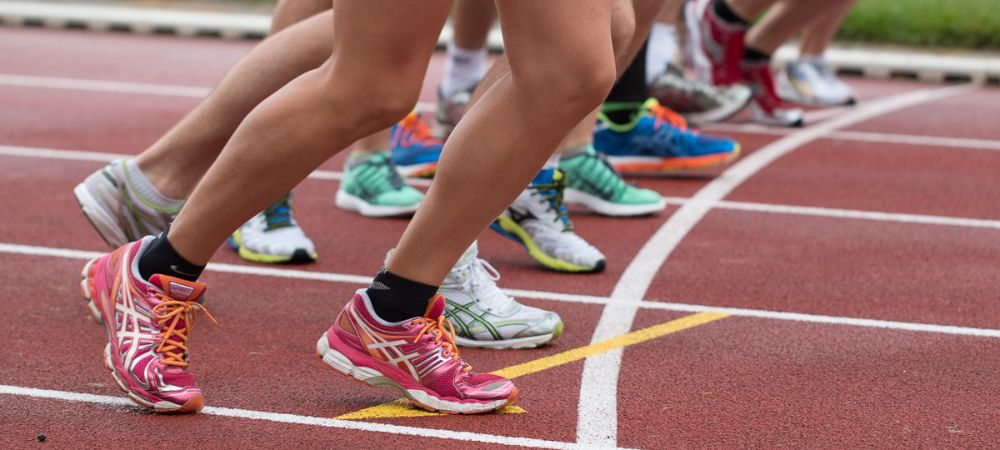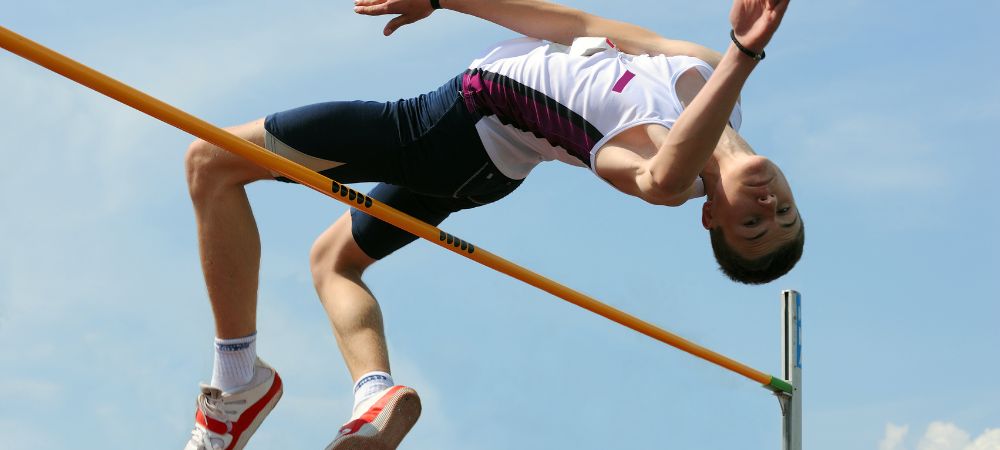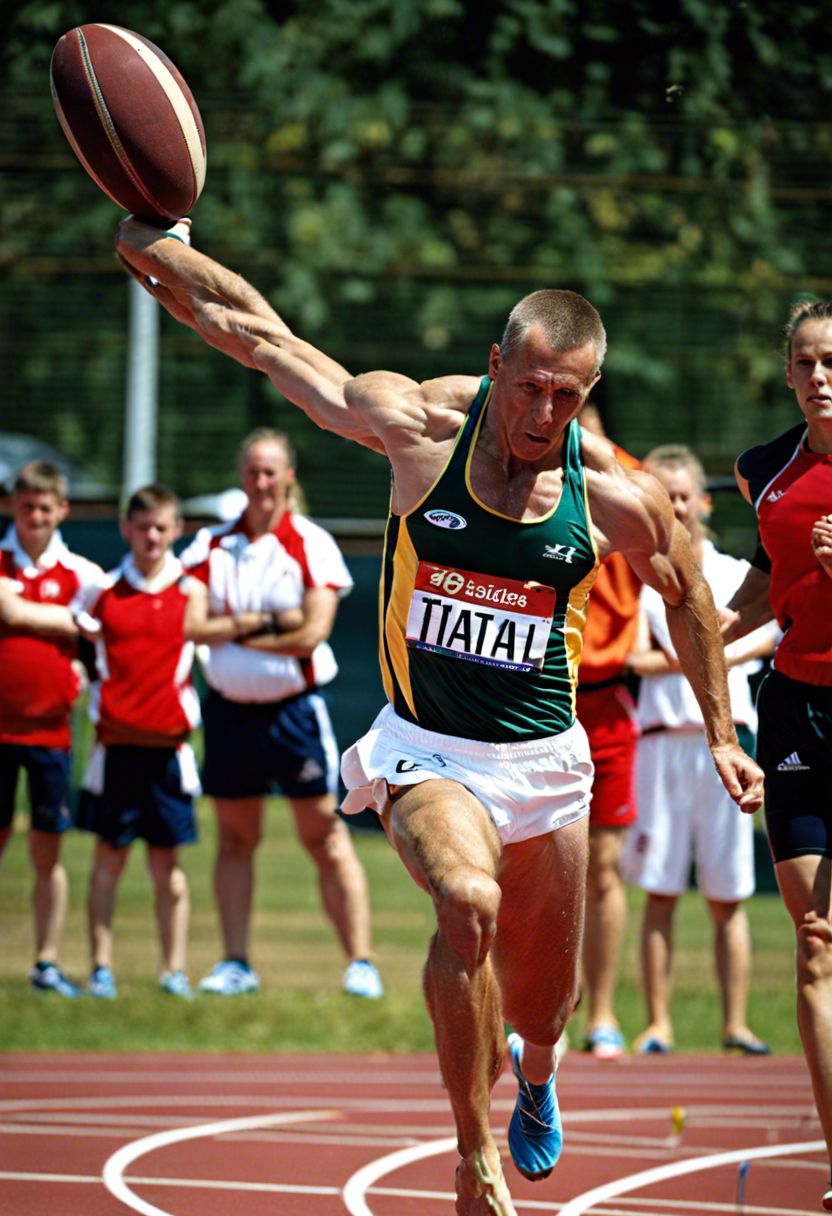

Soccer football, often simply called football by those outside North America, ain't just a game; it's a physically demanding sport that pushes athletes to their limits. The physical demands of soccer on athletes are immense, and not everyone can handle the grind. It's not like you can just wake up one day and decide to be a professional footballer without putting in years of hard work.
First off, let me tell ya, soccer ain't for the faint-hearted. Players have to run up and down the field for 90 minutes or more, depending on how many stoppage times there are. That's crazy! You'd think they'd get tired after all that running, but nope—they keep going like machines. extra information available see listed here. This endurance is something they train for tirelessly. Hours spent running drills and doing cardio exercises are essential to keep their stamina in check.
And then there's the agility part. Oh boy! Athletes need quick reflexes to dodge opponents and make those sharp turns while dribbling the ball. Imagine trying to control a ball with your feet while sprinting at full speed—it's no walk in the park! Not everyone has got that level of coordination.
Strength is another crucial factor that's often overlooked. Footballers must possess strength—not only in their legs but also in their upper bodies—to shield the ball from opponents and win aerial duels. It’s not about bulking up like bodybuilders; rather, it’s functional strength that matters here.
Moreover, let's not forget injuries—ouch! Soccer players are prone to various injuries due to contact with other players or even from overuse of certain muscles and joints. Sprained ankles, torn ligaments, concussions—you name it! These injuries can sideline an athlete for weeks or even months.
Then there's mental fatigue which is equally taxing as physical exhaustion if not more so sometimes. Maintaining focus throughout an entire match requires incredible mental toughness because one small mistake can cost your team dearly.
Training sessions aren't any less grueling either; they're designed specifically to mimic game conditions so players' bodies are always prepared for what might come during actual matches. But hey—it ain’t all doom n’ gloom ‘cause these rigorous routines help build resilience both mentally and physically among players making them better equipped each time they step onto pitch again!
In conclusion (oh wait), being a top-tier soccer player involves much more than kicking around balls on weekends—it demands unwavering commitment towards maintaining peak physical condition alongside honing technical skills continuously amidst facing numerous challenges head-on each day whether training ground or real-time matches alike yet despite everything—the love & passion shared towards beautiful game makes every bit worthwhile eventually isn't?
Training Regimens for Soccer Players
When it comes to soccer, one can't underestimate the importance of a well-rounded training regimen. It's not just about running around and kicking the ball, you know? A comprehensive training program is crucial for developing the skills, strength, and stamina needed to perform at your best on the pitch. Let's dive into what makes up an effective training routine for soccer players.
First off, let's talk about physical conditioning. You'd think that all those matches would be enough to keep players in shape, but that's really not the case. A good regimen includes cardiovascular exercises like jogging or cycling to build endurance. Without this kind of work, players would get tired way too quickly during games. It's also important to incorporate strength training – squats, lunges, and deadlifts are essential! Why? Because stronger muscles make for better performance and fewer injuries.
But we shouldn't forget technical skills either. Dribbling drills, passing practices, and shooting exercises are absolutely necessary if you want to improve your game. I mean, who doesn't want to score more goals or make that perfect pass? Regular practice helps in honing these skills so they become second nature when you're out there playing.
Oh! And don't even get me started on flexibility and agility training! These areas often get overlooked but they're super important too. Yoga and stretching routines can help prevent muscle tightness and injuries while agility ladders or cones can boost quickness and coordination on the field.
Mental preparation is another key component that people sometimes ignore. The mind plays such a big role in sports performance! Visualization techniques can help players prepare mentally for different scenarios they might face during a match. Confidence-building exercises are also beneficial because a player who's mentally strong won't back down easily under pressure.
Lastly – recovery is something many folks tend to neglect but it's vital for maintaining peak performance levels throughout the season. Proper rest periods between intense workouts let muscles recover properly which reduces risk of injury over time; plus massages or ice baths aid faster recovery as well!
So there you have it: an effective training regimen isn't just one thing but rather a combination of various elements working together seamlessly - physical conditioning with cardio & strength building; technical skill development through regular practice sessions; flexibility/agility improvement via yoga/stretching routines combined with mental prep strategies ensuring optimal readiness both physically & mentally alongwith proper recovery methods allowing sustained high-performance across matches played throughout any given football season!
In conclusion—soccer isn’t merely about talent alone—it’s whole lot more involving dedication towards maintaining balanced comprehensive approach within individualized structured programs tailored specifically addressing unique needs each player possesses thereby enabling attainment maximum potential possible ensuring success achieved collectively team level ultimately resulting victory celebrated both individually & collaboratively among teammates alike thus making beautiful game truly worthwhile endeavor pursued passionately worldwide today tomorrow beyond always forevermore...
The Olympic Gamings, revived in 1896, are among the globe's oldest showing off occasions, initially held in old Greece from 776 BC.
The very first marathon memorialized the run of the soldier Pheidippides from a battleground near the community of Marathon, Greece, to Athens in 490 B.C., inspiring the modern-day marathon's distance of 26.2 miles.
Sumo wrestling, Japan's nationwide sport, has ancient origins and was initially performed to delight the Shinto divine beings.
Table Tennis, also referred to as ping pong, was created in England throughout the 1880s as a small variation of tennis played inside throughout the winter season.
When it comes to unlocking your full athletic potential, there's no magic formula or one-size-fits-all approach.. But hey, don't fret—there are some secret techniques and strategies that elite athletes swear by.

Posted by on 2024-07-08
Getting started in athletics can be quite a journey, filled with both excitement and challenges.. One thing that top athletes often emphasize is the importance of maintaining consistency in training while being adaptable to changes or setbacks.

Posted by on 2024-07-08
Monitoring Progress and Adjusting Regimens in the realm of Training Techniques and Regimens is a vital aspect that shouldn't be overlooked.. It’s not just about sticking to a plan, but more about being adaptable and responsive to the body's feedback.
When we start on any training regimen, whether it’s for weight loss, muscle gain, or athletic improvement, it's essential to keep tabs on how things are going.

Posted by on 2024-07-08
Sports nutrition is a field riddled with myths and misconceptions that often lead athletes astray.. It’s important to bust these myths so athletes can fuel their bodies properly for peak performance.

Posted by on 2024-07-08
The term "Case Studies: Successful Implementations in Professional Sports" really brings to mind some of the most fascinating stories in athletics, especially when we dive into the topic of psychological preparation and mental toughness.. You'd think that physical strength is all that matters, but oh boy, you'd be wrong!

Posted by on 2024-07-08
Injury prevention and recovery in soccer, or football as it's known across most of the world, is a subject that’s often overlooked until it becomes absolutely necessary. Soccer players, whether they're professionals or amateurs, face a high risk of injuries given the nature of the sport. It's not just about skill and strategy; maintaining one's health is equally important.
First off, let's talk about injury prevention. It's not rocket science—basic things like warming up properly before games and practices can make a huge difference. Dynamic stretching has been proven to reduce muscle stiffness and improve performance. But hey, who hasn't skipped it once or twice? We all know how tempting it is to just dive right into play without a second thought.
It's also crucial for players to wear appropriate gear. Shin guards might seem cumbersome at times, but they’re really non-negotiable if you want to avoid fractures or bruises from those hard tackles. The right kind of shoes can also prevent ankle sprains by providing proper support and grip on various playing surfaces.
Now onto recovery—it's something that many athletes don’t give enough thought to until they’re sidelined by an injury. Rest is paramount; your body needs time to heal itself naturally. Overtraining can lead to chronic issues that are much harder to treat in the long run. Ice packs, compression wraps, and elevation (the good ol' R.I.C.E method) are immediate steps one should take post-injury.
Physical therapy plays a significant role in recovery too. A well-structured rehab program tailored for soccer-specific movements can expedite the healing process while ensuring that you're less likely to re-injure yourself down the line. Strength training focusing on core stability and leg muscles can help fortify areas prone to injury.
Don't forget about nutrition! It’s often said you are what you eat—so consuming foods rich in protein helps repair tissues faster while anti-inflammatory foods like berries and nuts can ease swelling and pain.
Mental health shouldn’t be ignored either when discussing injury recovery—it ain't easy being sidelined when all you wanna do is play! Athletes need a strong support system around them comprising family, friends, coaches, and even mental health professionals if required.
Hydration is another key aspect both for prevention and recovery; muscles cramp up quicker when they're dehydrated which could lead directly into an unexpected injury during those crucial moments in matches where every second counts.
So there it is: Injury prevention isn't just some extra step; it's integral part of being able perform consistently well over longer periods time without facing unnecessary setbacks due poor preparation habits or lack thereof entirely! Recovery isn’t simply waiting around till feel better again—it requires active participation from athlete themselves along with guidance trained medical staff ensure optimal return field action sooner rather than later!
In conclusion—or should I say finally?—being mindful about injury prevention strategies coupled with effective recovery protocols enables soccer players continue enjoying game love whilst minimizing risks associated physical strain inherent sport itself!


Ah, the beautiful game! Soccer, or football as most of the world calls it, is not just about fancy footwork and tactical genius. It's also a lot about what goes into your body. The role of nutrition in athletic performance for soccer players can't be overstated—although some folks might think otherwise.
First off, let’s debunk a common myth: you don’t need to eat like a horse to play like a lion. What you consume matters more than how much you consume. Carbohydrates are essential; they’re like fuel for a car. No carbs? Well, good luck running up and down that field for 90 minutes without feeling like you're dragging an anchor behind you.
Proteins are another biggie. They ain’t just for bodybuilders looking to bulk up. For soccer players, proteins help repair and build muscle tissue that's torn during those grueling matches and training sessions. Without enough protein, recovery is slower—and nobody wants to be hobbling around when they should be sprinting down the wing.
Fat has gotten a bad rep over the years but hey, it's not all evil. Healthy fats provide long-lasting energy and support cell function—pretty crucial stuff if you ask me. Just don’t go munching on deep-fried snacks thinking you're getting "good" fat!
Hydration? Oh boy, where do we even start? If you're not properly hydrated, it doesn’t matter how skilled or fit you are; you'll end up gasping for air before halftime. Water regulates body temperature and helps transport nutrients—basic yet vital functions that keep a player at peak performance levels.
Now, let's flip the coin: poor nutrition can totally wreck an athlete's game. Skipping meals or relying too much on junk food leads to sluggishness and decreased stamina—not exactly traits you'd want in someone chasing after a ball with 21 other people on the pitch.
But hey, it's not just about avoiding bad foods; timing matters too! Eating at the right times can make or break performance levels. A balanced meal rich in carbs taken 2-3 hours before kickoff can mean the difference between dominating opponents or being left in their dust.
So yeah, while skill drills and tactical know-how are super important for soccer success—nutrition plays an equally critical role that shouldn’t be ignored by any serious player out there.
In conclusion (oh no!), don’t underestimate what good nutrition can do for ya on match day—or any day really! It ain't rocket science but getting it right could very well be what takes your game from meh to magnificent!
Psychological preparation and mental toughness in soccer ain't just buzzwords; they're essential elements that can make or break a player’s performance on the field. You see, talent and physical conditioning are crucial, but without the right mindset, even the most skilled players might not reach their full potential.
First off, psychological preparation is about getting your head in the game before your feet even touch the pitch. It's not only about visualizing success—though that's part of it—but also about managing stress and staying focused. A player who's mentally prepped is less likely to be thrown off by a bad call from the ref or an unexpected play from the opposing team. They say that half of soccer is played with your mind, and honestly, I couldn't agree more.
Mental toughness, on the other hand, involves resilience and perseverance. It’s what keeps a player going when they’re down 2-0 with ten minutes left to play. It’s not giving up when things look bleak but instead digging deeper and pushing harder. Mental toughness means bouncing back from mistakes quickly rather than letting them spiral into worse performances.
You can’t talk about mental toughness without mentioning confidence. Players who second-guess themselves are less likely to take risks or seize opportunities—and let’s face it—soccer's all about seizing those fleeting moments to score a goal or block a shot. Confidence doesn't grow overnight; it's built through consistent practice and positive reinforcement from coaches and teammates.
Interestingly enough, both psychological preparation and mental toughness aren’t just individual traits; they're also cultivated within teams. A cohesive unit where everyone trusts each other can handle pressure better than a bunch of talented individuals who don't really mesh well together.
Not everything goes smoothly all the time though; there will be setbacks—injuries, losses, bad training days—you name it. But guess what? Those challenges actually help build mental fortitude if approached correctly.
In conclusion, you might have thought soccer was all about speed, strength, and skill—and you wouldn't be wrong—but don’t underestimate the power of psychological preparation and mental toughness. They're like invisible threads stitching together every aspect of a player's game into one unified force ready to tackle any challenge thrown its way!
The Evolution of Athleticism in Professional Soccer
Soccer, or football as it is called in most parts of the world, has seen incredible changes over the past century. The evolution of athleticism in professional soccer is nothing short of remarkable. It’s not like players from the early 1900s were unfit; they just weren't the finely-tuned machines we see today.
Back then, soccer was more about skill and less about speed or strength. Players didn't have to worry much about their diet, nor did they spend hours in the gym. Oh no! They played for the love of the game and relied on their natural talent to get by. But things started changing around mid-20th century. Coaches began realizing that physical fitness could give them an edge over their opponents.
Fast forward to now, today's professional soccer players are a different breed entirely. They're faster, stronger, and can run longer distances without breaking a sweat. It's almost unbelievable how much emphasis is placed on physical conditioning these days. Teams employ nutritionists, physiotherapists, and fitness coaches who work tirelessly behind the scenes to ensure players are at their peak physically.
Let's take Cristiano Ronaldo for instance—one of modern-day soccer's prime examples of athletic prowess. His dedication to maintaining his physique is legendary! He follows a strict diet and training regimen that would make even seasoned athletes shudder. And he ain't doing it alone; he's got a whole team supporting him!
But it's not just individual effort that's changed; the entire approach to training has evolved too. Gone are the days when warm-ups consisted merely of a few stretches and light jogging. Nowadays, players undergo rigorous drills designed specifically to enhance agility, balance and endurance.
However, this focus on athleticism hasn't come without its downsides either—some argue that it takes away from what made soccer beautiful: its artistry and creativity on field! There’s concern among purists that we're losing sight of what truly matters—the finesse with which legends like Pele or Maradona used to play.
Moreover,the pressure on young talents nowadays is higher than ever before because clubs invest heavily into ensuring they're physically up-to-par right from youth academies itself! This often leads some young stars burning out even before reaching their full potential due excessive stress both mentally & physically .
In conclusion,it can't be denied that evolution towards greater athleticism has transformed professional soccer dramatically . While there might be debates regarding whether or not this shift benefits overall quality sport , one thing clear –the game continues evolve adapting new trends technologies along way . So while reminiscing good old days fine , let’s also appreciate how far we've come !
Technological Advances and Their Impact on Soccer Training
Oh boy, where do we even start with how technology's changed soccer training? It's like night and day compared to what it used to be. You'd think all these fancy gadgets would make everyone a superstar, but it's not always that simple.
First off, let's talk about wearable tech. These little devices track everything from heart rate to muscle fatigue. Coaches can now monitor players in real-time, which they couldn't do before. But hey, it's not like the old days weren't good for something! Remember when you just ran laps until you dropped? Those were the times when grit really showed through.
Virtual reality (VR) is another game-changer—pun intended! Players can practice scenarios over and over without ever stepping onto the field. It’s almost like having a game console that actually helps you get better at your craft. But then again, nothing beats actual playtime with teammates; no VR headset will ever replace that camaraderie.
One can't forget about data analytics either. With mountains of data being crunched every second, coaches have an arsenal of stats to help tailor training programs specifically for each player’s needs. This means less time wasted on drills that don’t work and more focus on what does.
Then there's video analysis software which has been around for a bit but keeps getting better. Now players can review their performance instantly after practice or games, seeing exactly where they went wrong—or right! Yet still, some might argue it takes away from the natural feel of learning through experience alone.
Let's not ignore social media too; it's played quite the role as well. Young athletes see their idols posting workout routines and try to emulate them. While this ain't bad per se, sometimes it leads to overtraining or trying techniques they're not ready for yet.
But with all these advancements comes a downside too: Over-reliance on technology could potentially hamper instinctive playmaking skills—the kind that come from years of backyard scrimmages rather than meticulously planned drills governed by algorithms.
In conclusion (oh wait was I supposed avoid repeating?), while technological advances have undoubtedly revolutionized soccer training in many ways - making it more precise and efficient - there are certain timeless elements of raw talent and teamwork that no amount of tech will ever replace completely!
So yeah... isn't progress great?